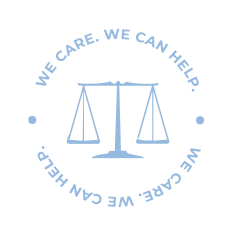Negligent military medical professionals are on notice: do better by our veterans. Anyone who suffered injuries as a result of military medical malpractice that did not happen in a combat zone can now seek compensation for their injuries.
Signed into law on Dec. 20, 2019, the 2020 National Defense Authorization Act allows active-duty military personnel and their families to file claims for personal injury or wrongful death caused by military medical providers. The bill contains a provision called the Stayskal Act which creates a pathway to hold negligent military medical providers responsible.
What did the 2020 National Defense Authorization Act do for service members?
The 2020 NDAA lifts the decades-old ban and makes a pathway toward accountability in instances of military medical malpractice. In short, active-duty victims and their families will now be able to seek compensation for injuries resulting from medical malpractice that occurred in a military hospital.
However, there are still significant limitations to when and where a military medical malpractice claim can be filed. Those limitations include the following:
- Combat Zones. The lew legislation does not permit service members to file claims for personal injuries caused by medical malpractice in combat zones.
- Jurisdiction. Service will not be able to sue in federal court. Instead, their claims will be handled administratively. For example, the Department of Defense will pay proven claims under $100,000 directly to the service member or a surviving beneficiary. On the other hand, claims that exceed $100,000 will be reviewed and paid out by the Secretary of Defense.
Why couldn’t service members file military medical malpractice claims?
The Feres Doctrine has essentially blocked military members and their families from filing such claims. Named for the plaintiff in Feres v. the United States, the decision issued by the Supreme Court 70 years ago meant that military personnel could not hold the federal government liable for personal injuries.
The Feres Doctrine survived several legal challenges since the Supreme Court’s ruling in 1950. Under the ruling, the United States was not liable for the injuries of active duty service members according to the Federal Tort Claims Act.
In many cases, the Supreme Court declined to hear cases because it considers the Feres Doctrine Settled law. This longstanding brick wall, in many cases, dissuaded active and retired military service members from even filing lawsuits for medical malpractice.
How did we get NDAA military medical malpractice compensation provision?
Feres is not overturned, instead, the provision in the NDAA sidesteps taking on the legal aspects of the doctrine head-on. The bill was inspired by Sgt. First Class Richard Stayskal.
Stayskal has terminal stage 4 lung cancer. His diagnosis comes after years of military physicians telling him that he has asthma or pneumonia. He didn’t learn of his stage 4 cancer until visiting a civilian pulmonologist.
Stayskal’s cancer is the result of a 2004 combat injury. A bullet him in the chest while serving a tour in Iraq. The injury left significant scar tissue. In January 2017, Stayskal went to the Womack Army Medical Center in Fort Bragg. After a scan, a doctor noted a mass on his right lung. There was a tumor present more than an inch in diameter. Four months later, an ambulance rushed Staskal to the ER. He was having chest pains, wheezing and felt dizzy. This time, the military hospital pulmonologist evaluated Stayskal and sent him home with a diagnosis of atypical pneumonia.
By that summer, Stayskal was coughing up blood. He obtained permission to see a civilian specialist. He received his first accurate diagnosis: stage 3 lung cancer.
Sfc. Richard Stayskal Military Medical Accountability Act of 2019 (Stayskal Act)
Congresswoman Jackie Speier (D-CA) introduced the Stayskal Act. Ultimately, the goal was to create an exemption that allows service members and their families to file medical malpractice suits under the FTCA. The Act was added to the National Defense Authorization Act of 2020 which has helped speed up the process for those seeking redress.
How far back can I file a military medical malpractice claim?
Victims have two years from the date of the injury to file a claim. However, victims who are seeking compensation in 2020 can file claims for injuries that occurred in 2017.
If you have a military medical malpractice injury that occurred in 2017, it is crucial to speak with a military medical malpractice attorney as soon as possible. Contact a qualified military medical malpractice attorney from The Carlson Law Firm to figure out your next steps.
Unfortunately, the legislation does not address military medical malpractice claims prior to 2017—no matter how extreme.
What are other challenges in an NDAA military medical malpractice claim?
Because these claims cannot be taken to federal court, there is little to no recourse for people wishing to appeal the DOD’s assessment of their case. Additionally, the Defense Department has very little institutional experience handling medical malpractice claims.
What does military medical malpractice look like?
Our veterans are the cornerstone of our country. Unfortunately, the systems in place to serve them are often overburdened and encumbered with obstacles that prevent them from receiving the utmost treatment. Active duty, veterans and their dependents endure long wait times to be seen in VA hospitals. In fact, many VA hospitals lack competent health care professionals. This lack of competent care often creates more problems for the veterans they serve. This is a problem that remains consistent.
VA hospital medical malpractice includes, but is not limited to the following:
- Anesthesia Errors
- Misdiagnosis
- Delay in Diagnosis
- Undiagnosed Condition That Resulted in Death or Loss in Quality of Life
- Delay in Treatment
- Emergency Room Errors
- Negligence During Surgery
- Planned C-Section Early Delivery Because of Due Date Miscalculation
- Prescription Negligence in Psychiatric Patients
- And more
If you or a loved one suffered a loss in quality of life because of military medical malpractice, contact us as soon as possible. An experienced military medical malpractice attorney can help you recover:
- Noneconomic or General Damages. Pain and suffering, loss in quality of life, emotional distress, survivors’ mental anguish after the wrongful death of a loved one.
- Economic or Special Damages. Lost wages and services, cost of medical care, and disability.
- Future Damages. Looks ahead at both noneconomic and economic damages resulting from the injury.
The Carlson Law Firm is here to help active and retired veterans
Despite the limitations that remain in place, the 2020 NDAA is a significant step forward for service members and their families. Those who suffered injuries from military medical malpractice or negligence now have a path forward in seeking redress. Negligent medical care should never be tolerated—no matter if it occurs in a civilian or military hospital.
The civilian legal system is complex. But navigating the intricacies of military law requires a certain level of experience that many law firms may not offer. The Carlson Law Firm is a veteran-owned and operated law firm serving clients nationwide. If you or a loved one needs assistance with filing a military medical malpractice claim, contact us today. We have a qualified military medical malpractice attorney who is ready to help guide you through the claims process. Finally, we only get paid if we successfully resolve your case.
Contact us today to schedule a free, no-obligation consultation with a Carlson Law Firm military medical malpractice attorney today.




